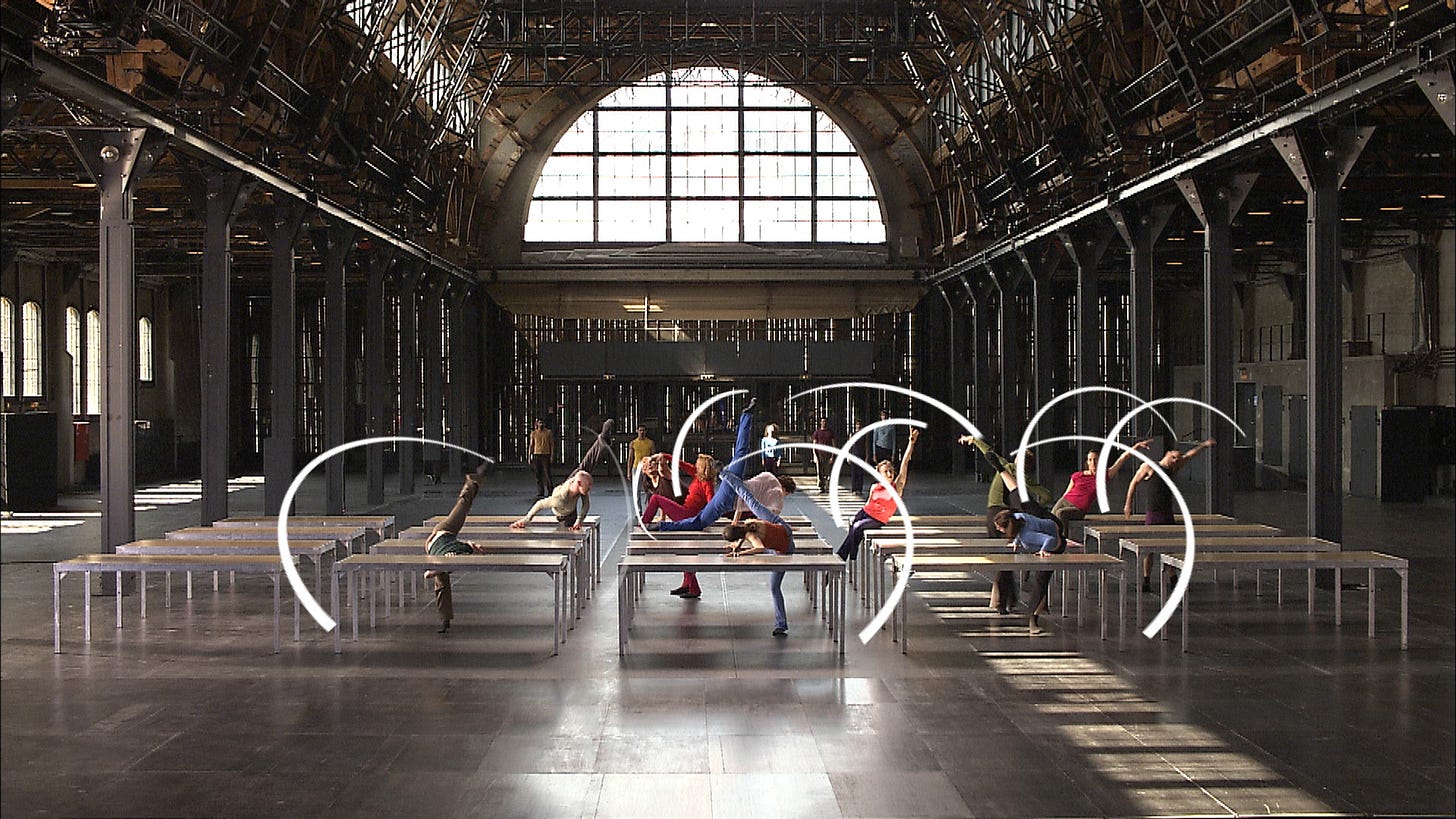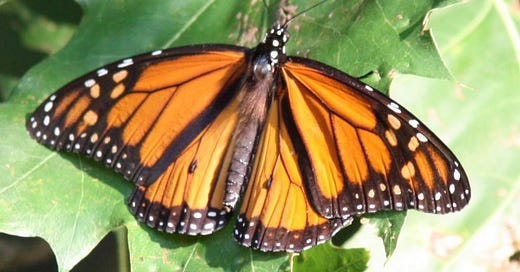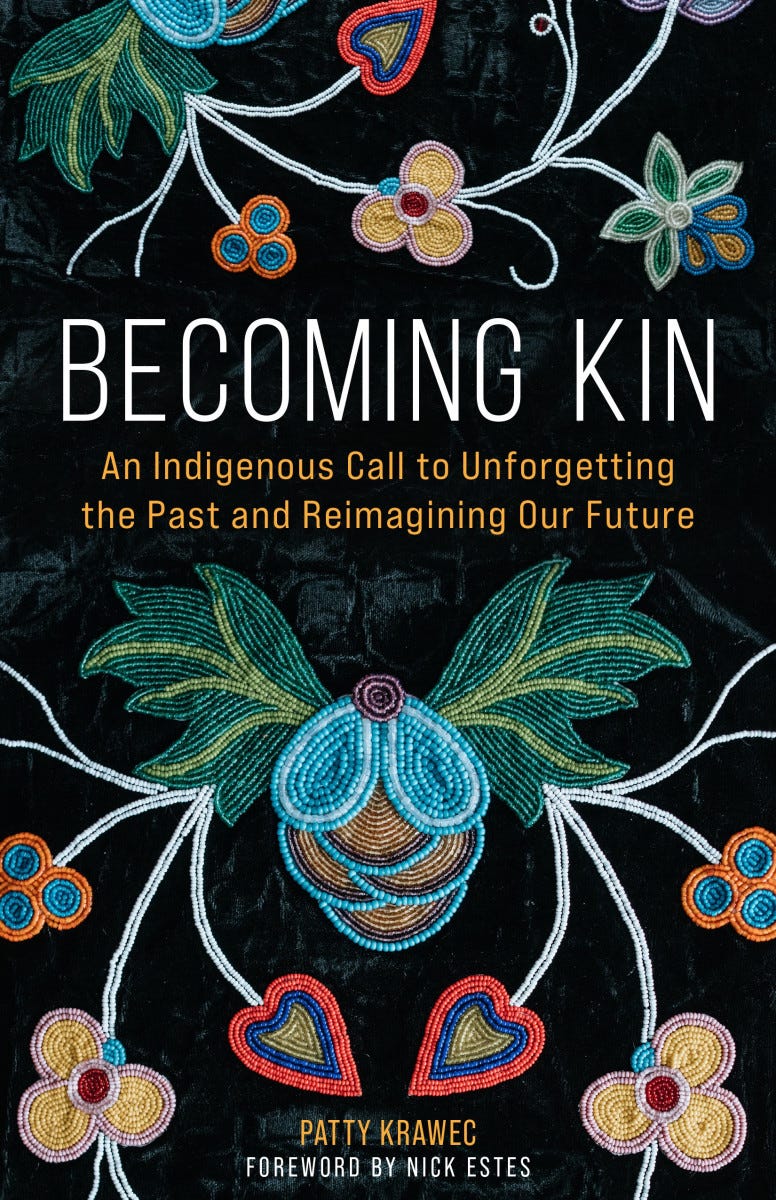Greetings Livable Futures community
Love to you all on Indigenous Peoples’ Day from my home here in the lower plateau of the great lakes region or what is now called central Ohio, a word taken from the Seneca people meaning “good river.”
How are you marking this day? If you’re unsure or would just like some support, I invite you to:
Arrive, take time to breathe and be with where you are and how you feel
Turn Toward the magnitudes, face into the difficult history of colonialism in relationship to your home place and inheritances, notice what you notice
Center, De-center, Re-center, around voices, practices, and rights of indigenous folks in your region
Soften into Intention, then move into right action from there
These are some of the foundational resilience practices in our Livable Futures community and I’ve written more about them in an earlier post.
I find strength in these practices and ways into motion instead of paralysis or powerlessness. They support continued commitment to taking right action from a place of peace and intention in the face of fear, rage, and sadness around anti-blackness, colonialism, misogeny, and environmental destruction. Feel free to be with those feelings and let them come through your bodies. Allowing those feelings to be present is important. And then what? Arrive, turn toward, re-center, and soften into intention and action.
Becoming Oddkin
At the moment, I am grateful to be facilitating a Livable Futures learning community at the university and the students inspire me every day.
Together we are reading and re-reading Patty Krawec’s Becoming Kin: An Indigenous Call to Unforgetting our Past and Reimagining our Future. I recommend it to everyone as part of a practice of centering indigenous voices, important groundwork in the Livable Futures community. Krawec also has a newsletter on Substack if you want to be in community more directly with her work.
Patty Krawec defines becoming kin in many ways throughout the book but at heart, it is about forming reciprocal relationships with an ethics of care that connects seemingly disparate communities—Native and non-Native, youth and elders, human and more-than-human... I am reminded here of Donna Haraway, a scientist and theorist whom I have followed for many years and a popular resource for many seekers.
In her beautiful philosophical treaties Staying with the Trouble (which I am also re-reading this Fall), Haraway offers several ways to think about and creatively reconfigure our relations to the earth and all its inhabitants, ways
“in which the human and nonhuman are inextricably linked in tentacular practices,” of making-with, rather than self-making.
The poetry of the phrase making-with may be all you need today, it is wonderfully evocative for me. If you’d like a bit more, Haraway directly addresses the challenges of the moment,
“learning to stay with the trouble of living and dying together on a damaged earth will prove more conducive to the kind of thinking that would provide the means to building more livable futures.”
To do so, Haraway introduces the concept of oddkin as a way of becoming kin with beings that may seem more or less likely to you, including pigeons and spiders or your household pets. Here’s a nice video of Haraway talking about making oddkin. She says,
“Staying with the trouble requires making oddkin; that is, we require each other in unexpected collaborations and combinations, in hot compost piles. We become-with each other or not at all.”
I liken this to the concept of alignments that I have researched for many years and shared through animations and text and movement in my work with choreographer William Forsythe and the dancers of the Ballet Frankfurt.
Alignments are moments in which our actions (or ideas) share some but not all attributes. They allow for fleeting moments of similarity that are dynamic. I’ll share more on this in the future if there is interest but for today, check out this video for a visual expression of alignments as a movement metaphor for thriving in fields of difference and diversity.

In her book, Patty Krawec shares the story of a group of Native and non-Native women, originally part of a support group, who gather together to drum and sing and have been doing so for many years,
“the circle is a stable place of welcome in an unstable world…whatever social position we occupy out there, the meaning drops off in the circle…it isn’t that people stop being those things. These things just stopped having social importance…the non-Native women who join the drumming circle don’t stop being non-Native, they respect our teachings and practices without needing to become us. We form a community of sister-friends. We become kin. Aanikoobijigan.” - Becoming Kin, 161-163
A stable place in an unstable world. What an appealing invitation. It is also dynamic because they are not trying to become one another or achieve some naive notion of unity but rather are showing up for each other in all of their difference with an ethics of care and creativity. What are the circles you are a part of that support reciprocity of this kind? What would you like to create?
The Importance of Noticing
We each, depending on our ancestry and the privileges with which we walk through the world, come to this question from different places and can support each other in finding generative ways forward.
Indigenous readers may mostly need to find spaces of rest and recuperation and solidarity.
As a white woman living in North America as a result of settler colonialism, I am called in to acknowledging indigenous lands and rights, to holding them present in my consciousness, and to regularly finding ways into being a friend and accomplice.
One of the practices (what she calls Aambes) Patty Krawec asks that we all do is to look around us in North America and in other settler colonial contexts such as Australia and Aotearoa/New Zealand and notice how things are named. Then spend a little time learning more about those names and how they relate to our indigenous histories and presents.
This noticing practice can also be meaningful in other contexts to widen and deepen awareness and connection to place. It is differently powerful if we already know a lot about where are and if we do not. We will notice different things and can peel back different layers. I’d love to hear from folks as you live into this aambe.
Ohio is home to the Shawnee, Delaware, Ottawa, Miami, Seneca-Cayuga, and Wyandot peoples past, present and emerging, some of whom still live here today and many of whom are now in Oklahoma due to the Indian Removal Act of 1830. As part of my response to this aambe, I’ve been thinking again about all these northern woodland people who made this place home in the 19th century before they were forcibly displaced and who are still its contemporary stewards.
As Autumn slowly transitions to Winter here, there are a few ripe fruit left on the Paw Paw trees. Paw Paws are mango-like fruit trees native to this area are a delight and I can only imagine what a sweet treat they were and are each year for the Shawnee who call them ha’siminikiisfwa.
I’m captivated by the Monarch butterflies migrating through our region and I wonder what they are called in the the many indigenous languages of this region. I found a Lenape dictionary online with the word for Milkweed, the plant on which the Monarch’s depend: memekas nehënawlachi but I have yet to find anything from closer to home. If there are readers who know of resources, I hope you will share them in the comments!
A few queries:
If you are indigenous to where you live, what do you want right now to support your thriving? What does support look like for you? How can this community and this newsletter be of service?
If you are settler colonial or other non-Native, who and where are the indigenous people in your region? Patty Krawec shares as a first step in one of her early aambes,
“Look for us in your life, on your bookshelf, in the music you listen to and the movies or television you watch. Look for us on your social media feed. Look for us in the collective nostalgia of your country. Don’t try to read too much into our presence or absence. Just notice. Where are we?” -Becoming Kin
And for everyone, what are the rhythms of the season where you are? Perhaps take a walk today in silence and notice what you notice. What forms of support are you finding in the more-than-human world around you?
Being-with Where You Are
Hawaiian scholar/artist/activist Emalani Case offers beautiful perspectives for practicing being where you are and living with respect for the land and its indigenous peoples. I met her in Aotearoa/New Zealand when I was there in 2019 and she was the very first contributor to the Livable Futures podcast (linked below or find it wherever you get your podcasts).
I’ll share more from Emalani in the future because this newsletter is getting a bit long today but for now I’ll give you a little taste of her work to inspire you. Here is a short passage from the publisher’s description of her book Everything Ancient was Once New:
“Emalani Case explores Indigenous persistence through the concept of Kahiki, a term that is at once both an ancestral homeland for Kānaka Maoli (Hawaiians) and the knowledge that there is life to be found beyond Hawaiʻi’s shores.
Kahiki is both a symbol of ancestral connection and the potential that comes with remembering and acting upon that connection.
Tracing physical, historical, intellectual, and spiritual journeys to and from Kahiki, Emalani frames it as a place of refuge and sanctuary, a place where ancient knowledge can constantly be made anew.
It is in Kahiki, she argues, and in the sanctuary it creates, that today’s Kānaka Maoli can find safety and reprieve from the continued onslaught of settler colonial violence, while also confronting some of the often uncomfortable and challenging realities of being Indigenous in Hawaiʻi, in the Pacific, and in the world.” - Native Books
This work and Emalani’s leadership feels all the more important in the wake of the fires on Maui and as part of the recovery work the people of Hawaii are engaged in today. I’ll be re-reading Emalani’s book as well this month and would love to read alongside you.
I’m also always interested in other texts that might be supportive it indigenous rights and wellbeing. The poetry of Nathalie Diaz is one last delicious offering I will make today. Diaz is Mojave and an enrolled member of the Gila River Indian Tribe and her book Postcolonial Love Poem recently won the Pulitzer Prize.
Feel free to share ideas in the comments below. What are you reading/viewing and connecting with this month?
And as always, this newsletter is free and please share it near and far, as much as you like.
Always grateful to be in community with you all,
Norah






